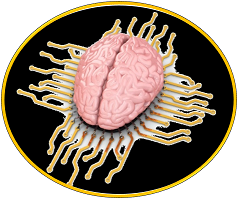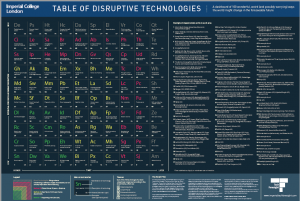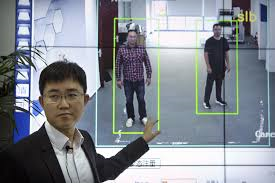 [Editor’s Note: Mad Scientist Laboratory is pleased to present our October edition of “The Queue” – a monthly post listing the most compelling articles, books, podcasts, videos, and/or movies that the U.S. Army’s Training and Doctrine Command (TRADOC) Mad Scientist Initiative has come across during the past month. In this anthology, we address how each of these works either informs or challenges our understanding of the Future Operational Environment. We hope that you will add “The Queue” to your essential reading, listening, or watching each month!]
[Editor’s Note: Mad Scientist Laboratory is pleased to present our October edition of “The Queue” – a monthly post listing the most compelling articles, books, podcasts, videos, and/or movies that the U.S. Army’s Training and Doctrine Command (TRADOC) Mad Scientist Initiative has come across during the past month. In this anthology, we address how each of these works either informs or challenges our understanding of the Future Operational Environment. We hope that you will add “The Queue” to your essential reading, listening, or watching each month!]
1. Table of Disruptive Technologies, by Tech Foresight, Imperial College London, www.imperialtechforesight.com, January 2018.
 This innovative Table of Disruptive Technologies, derived from Chemistry’s familiar Periodic Table, lists 100 technological innovations organized into a two-dimensional table, with the x-axis representing Time (Sooner to Later) and the y-axis representing the Potential for Socio-Economic Disruption (Low to High). These technologies are organized into three time horizons, with Current (Horizon 1 – Green) happening now, Near Future (Horizon 2 – Yellow) occurring in 10-20 years, and Distant Future (Horizon 3 – Fuchsia) occurring 20+ years out. The outermost band of Ghost Technologies (Grey) represents fringe science and technologies that, while highly improbable, still remain within the realm of the possible and thus are “worth watching.” In addition to the time horizons, each of these technologies has been assigned a number corresponding to an example listed to the right of the Table; and a two letter code corresponding to five broad themes: DE – Data Ecosystems, SP – Smart Planet, EA – Extreme Automation, HA – Human Augmentation, and MI – Human Machine Interactions. Regular readers of the Mad Scientist Laboratory will find many of these Potential Game Changers familiar, albeit assigned to far more conservative time horizons (e.g., our community of action believes Swarm Robotics [Sr, number 38], Quantum Safe Cryptography [Qs, number 77], and Battlefield Robots [Br, number 84] will all be upon us well before 2038). That said, we find this Table to be a useful tool in exploring future possibilities and will add it to our “basic load” of disruptive technology references, joining the annual Gartner Hype Cycle of Emerging Technologies.
This innovative Table of Disruptive Technologies, derived from Chemistry’s familiar Periodic Table, lists 100 technological innovations organized into a two-dimensional table, with the x-axis representing Time (Sooner to Later) and the y-axis representing the Potential for Socio-Economic Disruption (Low to High). These technologies are organized into three time horizons, with Current (Horizon 1 – Green) happening now, Near Future (Horizon 2 – Yellow) occurring in 10-20 years, and Distant Future (Horizon 3 – Fuchsia) occurring 20+ years out. The outermost band of Ghost Technologies (Grey) represents fringe science and technologies that, while highly improbable, still remain within the realm of the possible and thus are “worth watching.” In addition to the time horizons, each of these technologies has been assigned a number corresponding to an example listed to the right of the Table; and a two letter code corresponding to five broad themes: DE – Data Ecosystems, SP – Smart Planet, EA – Extreme Automation, HA – Human Augmentation, and MI – Human Machine Interactions. Regular readers of the Mad Scientist Laboratory will find many of these Potential Game Changers familiar, albeit assigned to far more conservative time horizons (e.g., our community of action believes Swarm Robotics [Sr, number 38], Quantum Safe Cryptography [Qs, number 77], and Battlefield Robots [Br, number 84] will all be upon us well before 2038). That said, we find this Table to be a useful tool in exploring future possibilities and will add it to our “basic load” of disruptive technology references, joining the annual Gartner Hype Cycle of Emerging Technologies.
2. The inventor of the web says the internet is broken — but he has a plan to fix it, by Elizabeth Schulze, Cnbc.com, 5 November 2018.
 Tim Berners-Lee, who created the World Wide Web in 1989, has said recently that he thinks his original vision is being distorted due to concerns about privacy, access, and fake news. Berners-Lee envisioned the web as a place that is free, open, and constructive, and for most of his invention’s life, he believed that to be true. However, he now feels that the web has undergone a change for the worse. He believes the World Wide Web should be a protected basic human right. In order to accomplish this, he has created the “Contract for the Web” which contains his principles to protect web access and privacy. Berners-Lee’s “World Wide Web Foundation estimates that 1.5 billion… people live in a country with no comprehensive law on personal data protection. The contract requires governments to treat privacy as a fundamental human right, an idea increasingly backed by big tech leaders like Apple CEO Tim Cook and Microsoft CEO Satya Nadella.” This idea for a free and open web stands in contrast to recent news about China and Russia potentially branching off from the main internet and forming their own filtered and censored Alternative Internet, or Alternet, with tightly controlled access. Berners-Lee’s contract aims at unifying all users under one over-arching rule of law, but without China and Russia, we will likely have a splintered and non-uniform Web that sees only an increase in fake news, manipulation, privacy concerns, and lack of access.
Tim Berners-Lee, who created the World Wide Web in 1989, has said recently that he thinks his original vision is being distorted due to concerns about privacy, access, and fake news. Berners-Lee envisioned the web as a place that is free, open, and constructive, and for most of his invention’s life, he believed that to be true. However, he now feels that the web has undergone a change for the worse. He believes the World Wide Web should be a protected basic human right. In order to accomplish this, he has created the “Contract for the Web” which contains his principles to protect web access and privacy. Berners-Lee’s “World Wide Web Foundation estimates that 1.5 billion… people live in a country with no comprehensive law on personal data protection. The contract requires governments to treat privacy as a fundamental human right, an idea increasingly backed by big tech leaders like Apple CEO Tim Cook and Microsoft CEO Satya Nadella.” This idea for a free and open web stands in contrast to recent news about China and Russia potentially branching off from the main internet and forming their own filtered and censored Alternative Internet, or Alternet, with tightly controlled access. Berners-Lee’s contract aims at unifying all users under one over-arching rule of law, but without China and Russia, we will likely have a splintered and non-uniform Web that sees only an increase in fake news, manipulation, privacy concerns, and lack of access.
3. Chinese ‘gait recognition’ tech IDs people by how they walk, Associated Press News, 6 November 2018.

The Future Operational Environment’s “Era of Contested Equality” (i.e., 2035 through 2050) will be marked by significant breakthroughs in technology and convergences, resulting in revolutionary changes. Under President Xi Jinping‘s leadership, China is becoming a major engine of global innovation, second only to the United States. China’s national strategy of “innovation-driven development” places innovation at the forefront of economic and military development.
Early innovation successes in artificial intelligence, sensors, robotics, and biometrics are being fielded to better control the Chinese population. Many of these capabilities will be tech inserted into Chinese command and control functions and intelligence, security, and reconnaissance networks redefining the timeless competition of finders vs. hiders. These breakthroughs represent homegrown Chinese innovation and are taking place now.
A recent example is the employment of ‘gait recognition’ software capable of identifying people by how they walk. Watrix, a Chinese technology startup, is selling the software to police services in Beijing and Shanghai as a further push to develop an artificial intelligence and data drive surveillance network. Watrix reports the capability can identify people up to 165 feet away without a view of their faces. This capability also fills in the sensor gap where high-resolution imagery is required for facial recognition software.
4. VR Boosts Workouts by Unexpectedly Reducing Pain During Exercise, by Emma Betuel, Inverse.com, 4 October 2018.
 Tricking the brain can be fairly low tech, according to Dr. Alexis Mauger, senior lecturer at the University of Kent’s School of Sport and Exercise Sciences. Research has shown that students who participated in a Virtual Reality-based exercise were able to withstand pain a full minute longer on average than their control group counterparts. Dr. Mauger hypothesized that this may be due to a lack of visual cues normally associated with strenuous exercise. In the case of the specific research, participants were asked to hold a dumbbell out in front of them for as long as they could. The VR group didn’t see their forearms shake with exhaustion or their hands flush with color as blood rushed to their aching biceps; that is, they didn’t see the stimuli that could be perceived as signals of pain and exertion. These results could have significant and direct impact on Army training. While experiencing pain and learning through negative outcomes is essential in certain training scenarios, VR could be used to train Soldiers past where they would normally be physically able to train. This could not only save the Army time and money but also provide a boost to exercises as every bit of effectiveness normally left at the margins could now be acquired.
Tricking the brain can be fairly low tech, according to Dr. Alexis Mauger, senior lecturer at the University of Kent’s School of Sport and Exercise Sciences. Research has shown that students who participated in a Virtual Reality-based exercise were able to withstand pain a full minute longer on average than their control group counterparts. Dr. Mauger hypothesized that this may be due to a lack of visual cues normally associated with strenuous exercise. In the case of the specific research, participants were asked to hold a dumbbell out in front of them for as long as they could. The VR group didn’t see their forearms shake with exhaustion or their hands flush with color as blood rushed to their aching biceps; that is, they didn’t see the stimuli that could be perceived as signals of pain and exertion. These results could have significant and direct impact on Army training. While experiencing pain and learning through negative outcomes is essential in certain training scenarios, VR could be used to train Soldiers past where they would normally be physically able to train. This could not only save the Army time and money but also provide a boost to exercises as every bit of effectiveness normally left at the margins could now be acquired.
5. How Teaching AI to be Curious Helps Machines Learn for Themselves, by James Vincent, The Verge, 1 November 2018, Reviewed by Ms. Marie Murphy.
 Presently, there are two predominant techniques for machine learning: machines analyzing large sets of data from which they extrapolate patterns and apply them to analogous scenarios; and giving the machine a dynamic environment in which it is rewarded for positive outcomes and penalized for negative ones, facilitating learning through trial and error.
Presently, there are two predominant techniques for machine learning: machines analyzing large sets of data from which they extrapolate patterns and apply them to analogous scenarios; and giving the machine a dynamic environment in which it is rewarded for positive outcomes and penalized for negative ones, facilitating learning through trial and error.
In programmed curiosity, the machine is innately motivated to “explore for exploration’s sake.” The example used to illustrate the concept of learning through curiosity details a machine learning project called “OpenAI” which is learning to win a video game in which the reward is not only staying alive but also exploring all areas of the level. This method has yielded better results than the data-heavy and time-consuming traditional methods. Applying this methodology for machine learning in military training scenarios would reduce the human labor required to identify and program every possible outcome because the computer finds new ones on its own, reducing the time between development and implementation of a program. This approach is also more “humanistic,” as it allows the computer leeway to explore its virtual surroundings and discover new avenues like people do. By training AI in this way, the military can more realistically model various scenarios for training and strategic purposes.
6. EU digital tax plan flounders as states ready national moves, by Francesco Guarascio, Reuters.com, 6 November 2018.
 A European Union plan to tax internet firms like Google and Facebook on their turnover is on the verge of collapsing. As the plan must be agreed to by all 28 EU countries (a tall order given that it is opposed by a number of them), the EU is announcing national initiatives instead. The proposal calls for EU states to charge a 3 percent levy on the digital revenues of large firms. The plan aims at changing tax rules that have let some of the world’s biggest companies pay unusually low rates of corporate tax on their earnings. These firms, mostly from the U.S., are accused of averting tax by routing their profits to the bloc’s low-tax states.
A European Union plan to tax internet firms like Google and Facebook on their turnover is on the verge of collapsing. As the plan must be agreed to by all 28 EU countries (a tall order given that it is opposed by a number of them), the EU is announcing national initiatives instead. The proposal calls for EU states to charge a 3 percent levy on the digital revenues of large firms. The plan aims at changing tax rules that have let some of the world’s biggest companies pay unusually low rates of corporate tax on their earnings. These firms, mostly from the U.S., are accused of averting tax by routing their profits to the bloc’s low-tax states.
This is not just about taxation. This is about the issue of citizenship itself. What does it mean for virtual nations – cyber communities which have gained power, influence, or capital comparable to that of a nation-state – that fall outside the traditional rule of law? The legal framework of virtual citizenship turn upside down and globalize the logic of the special economic zone — a geographical space of exception, where the usual rules of state and finance do not apply. How will these entities be taxed or declare revenue?
Currently, for the online world, geography and physical infrastructure remain crucial to control and management. What happens when it is democratized, virtualized, and then control and management change? Google and Facebook still build data centers in Scandinavia and the Pacific Northwest, which are close to cheap hydroelectric power and natural cooling. When looked at in terms of who the citizen is, population movement, and stateless populations, what will the “new normal” be?
7. Designer babies aren’t futuristic. They’re already here, by Laura Hercher, MIT Technology Review, 22 October 2018.
 In this article, subtitled “Are we designing inequality into our genes?” Ms. Hercher echoes what proclaimed Mad Scientist Hank Greely briefed at the Bio Convergence and Soldier 2050 Conference last March – advances in human genetics will be applied initially in order to have healthier babies via the genetic sequencing and the testing of embryos. Embryo editing will enable us to tailor / modify embryos to design traits, initially to treat diseases, but this will also provide us with the tools to enhance humans genetically. Ms. Hercher warns us that “If the use of pre-implantation testing grows and we don’t address the disparities in who can access these treatments, we risk creating a society where some groups, because of culture or geography or poverty, bear a greater burden of genetic disease.” A valid concern, to be sure — but who will ensure fair access to these treatments? A new Government agency? And if so, how long after ceding this authority to the Government would we see politically-expedient changes enacted, justified for the betterment of society and potentially perverting its original intent? The possibilities need not be as horrific as Aldous Huxley’s Brave New World, populated with castes of Deltas and Epsilon-minus semi-morons. It is not inconceivable that enhanced combat performance via genetic manipulation could follow, resulting in a permanent caste of warfighters, distinct genetically from their fellow citizens, with the associated societal implications.
In this article, subtitled “Are we designing inequality into our genes?” Ms. Hercher echoes what proclaimed Mad Scientist Hank Greely briefed at the Bio Convergence and Soldier 2050 Conference last March – advances in human genetics will be applied initially in order to have healthier babies via the genetic sequencing and the testing of embryos. Embryo editing will enable us to tailor / modify embryos to design traits, initially to treat diseases, but this will also provide us with the tools to enhance humans genetically. Ms. Hercher warns us that “If the use of pre-implantation testing grows and we don’t address the disparities in who can access these treatments, we risk creating a society where some groups, because of culture or geography or poverty, bear a greater burden of genetic disease.” A valid concern, to be sure — but who will ensure fair access to these treatments? A new Government agency? And if so, how long after ceding this authority to the Government would we see politically-expedient changes enacted, justified for the betterment of society and potentially perverting its original intent? The possibilities need not be as horrific as Aldous Huxley’s Brave New World, populated with castes of Deltas and Epsilon-minus semi-morons. It is not inconceivable that enhanced combat performance via genetic manipulation could follow, resulting in a permanent caste of warfighters, distinct genetically from their fellow citizens, with the associated societal implications.
If you read, watch, or listen to something this month that you think has the potential to inform or challenge our understanding of the Future Operational Environment, please forward it (along with a brief description of why its potential ramifications are noteworthy to the greater Mad Scientist Community of Action) to our attention at: usarmy.jble.tradoc.mbx.army-mad-scientist@mail.mil — we may select it for inclusion in our next edition of “The Queue”!



